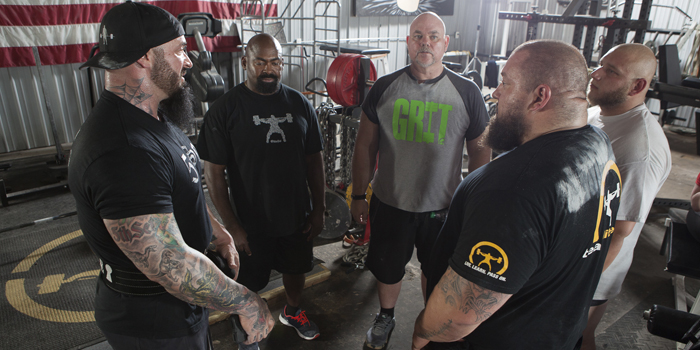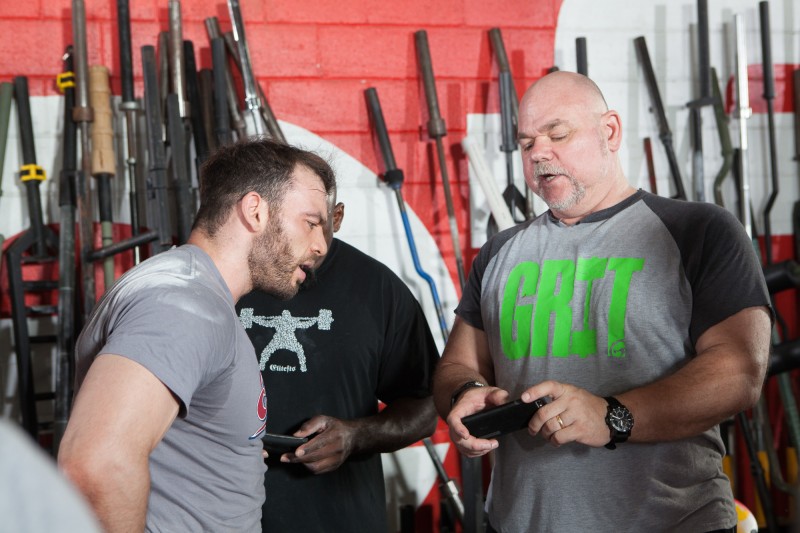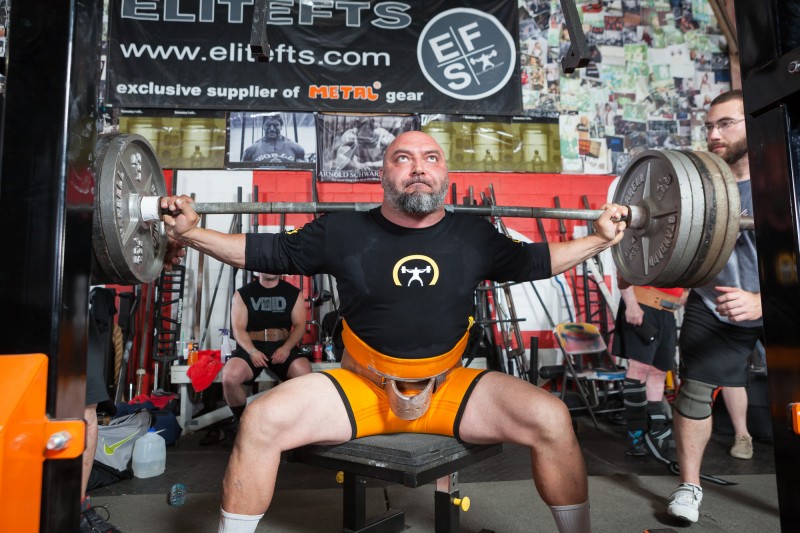
In my last article, in which I described my reasons for returning to powerlifting, I listed the qualities of camaraderie, humility, and the willingness to help beginners. This has also been mentioned by many others and is one of the hallmarks of powerlifting, the sport of the very strong. All of the people who will be mentioned below have had some influence on me, my lifting, and my character development. I would not be the person or the lifter I am today without their influence. I will list them in no particular order, for I consider each person’s influence no more important than that of any other’s.
Steve Zinn
Steve was the owner of Zinn’s Muscle Factory in Queens, New York. Zinn’s was one of the more hardcore gyms in NYC when the word "hardcore" actually meant something. A number of bodybuilders, powerlifters, actors, and wrestlers trained there from time to time. Steve had been around the iron sports a long time and had rubbed elbows with the best, from NYC to Venice Beach.
READ: What I Learned from Arnold Schwarzenegger
He was abrasive, as were many old timers of the day, but his abrasiveness was always tempered with absolute and brutal honesty. A few years into my lifting I asked Steve for his opinion on why my bench press had stalled at 275. He asked me what my overhead press was, and when I responded that it was barely over 125 he simply said, "Your press SUCKS." It took a few years, but when my press passed 225, my close grip bench passed 350. The takeaway: the person who isn’t honest about your failures, doesn’t care.
John Barnwell
When I began training at Zinn’s, one day I went over to the pulldown machine, changed the weight, and almost began my set when a guy came over to me yelling expletives about how he was on the machine. I yielded the machine, and over the next few years we became training partners and team members. John was the senior of the team and we named the team Big Daddy’s Powerlifting after him. He was a reformed ex-con who had done some time for the youthful indiscretion of auto theft and was never in trouble again. He was a concrete worker who worked hard and lifted harder. He was a great team player who always assisted during training sessions. John taught me not to quit a weight; he would willingly die under a squat if need be. John’s tenacity was forged by an attitude that the weight was the enemy — to fail is to allow the enemy to beat you. I transferred this to visualizing the 300 Spartans defending the pass of Thermopylae. John has since passed away. RIP, Big Daddy.
Frank Gavin
Shortly after meeting John Barnwell, while walking to the deadlift platform that same training session I saw a very large, red-faced super heavyweight sitting on a bench. He was wearing a singlet and a pair of Kahru weightlifting shoes. I approached him and struck up a conversation. Frank had competed nationally in Olympic weightlifting and had dabbled in powerlifting, as many weightlifters did during the late '60s. Frank became my coach and eventually our team coach. He was at every training session and at every meet. He passed on to me his knack of picking attempt numbers and his disciplined approach to meet conduct and attempt selection. Frank’s theory of attempt selection was that you select a weight that allows you to win first, to place second, and to PR third, always of course avoiding a bomb out. Under his guidance, in 17 years I only got one squat rejected on a technical infraction. Unfortunately, Frank is no longer with us. RIP, Big Frank.
Steve Scialpi
I met Steve at an ADFPA (now USAPL) meet in White Plains, New York. I had just begun warming up for the deadlift in a sumo stance and he approached me and asked if I would let him handle me during the deadlift. I was amazed that a world champion (at that time Steve had one of the top four deadlifts at 198 in history, the other three being Ed Coan, Walter Thomas and Vince Anello) would even bother with me. I PR’d my sumo by 25 pounds that day. When I later found out that Steve had opened General Fitness Center in Whitestone, New York, I rushed to join. In the year I trained there, my sumo deadlift increased by 100 pounds. Steve had a brutal training system using 40 to 50 reps of volume with deficits, using no belt and 35-pound plates without touching the floor. More importantly, he taught me to lift calmly and focused without a frenzied psyche-up routine. His psyche-up method was to focus on the center of the bar, ignore the plates, and unleash hell once the bar was in hand.
Fred Hatfield
I met Dr. Squat at the Connecticut State Championships in 1994. Our Big Daddy’s team had fielded six lifters that day, and all but one bombed out during the squats due to a bout of flu that infected us all within the last two weeks of our training cycle. Fred came over to us and, by telling jokes and stories of old times, cheered us up. He reminded us that no matter how bad things get, they can and will always get better. Fred left us this past year. RIP, Dr. Squat.
Gary Heisey
I met Gary at a WNPF meet in Lancaster, Pennsylvania. At that time Gary and Danny Wohleber were the only two men to have deadlifted over 900 pounds. Gary sat with us in the warm-up area and chewed the fat for a few hours. He sat on a folding chair and his legs were so long that his knees were almost as high as his shoulders. He also had the biggest hands I have ever seen on a human. He was very nice and humble and gave us locations of local buffet eateries. You have to figure that a six-eight, 360-pound man knew where to eat on the cheap. He made such an impression on my wife that to this day she comments on what a down-to-earth man he was. A true gentle giant.

Gene “Mean Gene” Mobley
After Zinn’s closed, I trained at the BQE fitness center in Queens, New York and hooked up with a group of powerlifters who trained there. The oldest was Gene Mobley, a 65-year-old master lifter, ex-paratrooper, and ex-raccoon hunter from Georgia. Gene was still jumping out of airplanes at the age of 65. Gene was one of the best motivators I ever met and he helped my by not letting me get out of doing what he called homework (20 minutes of stretching and 20 minutes of fast treadmill walking) after every session. All of Gene’s relatives were in Georgia, and as he lived alone, he died alone and was discovered three days later. RIP, Gene; you are sorely missed.
Though the group of individuals mentioned above were of different races, religions, occupations, and beliefs, they all had one thing in common. They all took the time to pass their accumulated knowledge on to a beginning lifter without any payback of any kind or any social media credit. It is why I try to assist other gym members when advice is solicited. At the time they were helping me, there was no social media. The only way to learn was to read Powerlifting USA or ask other lifters. If you wanted access to the elite, you had to seek them out and go to them. Today, with so much free information available, lifters have access to quality information through social media and there is no longer an excuse for bad technique or ineffective training.
READ: Why You Need to Return to Powerlifting
Unfortunately, however, along with the good, social media has spawned an attitude of disrespect towards other lifters that has never been seen before. There are a number of individuals who take every opportunity to diminish the accomplishments of others with comments such as, “Let’s see him do that raw", "Sumo is cheating", "Westside lifters are all on drugs", "'Let's see him take that squat ass-to-grass", etc. When reading these copout statements, consider these questions: Is a 1000-pound shirted bench not awesome? Is a four or five times bodyweight sumo deadlift not an awe-inspiring feat? If a lifter squats 1200 pounds in multi-ply gear, do you really think he is weak? If a lifter got a generous call from the judges and was an inch high, do we blame the lifter without realizing that referees are human? Is everyone stronger than you on drugs? We should learn from these lifters and celebrate all their exceptional lifting achievements as what they are: exceptional achievements.
Let us all try to go back to the way it was when lifters trained hard, competed harder, and respected each other and the differing methods of lifting without sniping and tearing others down. This, after all, is one of the qualities that attracted us all to powerlifting, and to lose it would be to permanently lose a great part of the sport.
John Backos resides in Upper Saddle River, New Jersey with his wife of 25 years and two daughters. By trade, he is an architect and works as a Construction Site Safety Coordinator in New York City. He trains at an NYSC in Ramsey, New York.











He resembled the real Mr. T except that he was about twice his size and much stronger. I remember him deadlifting seven 45lb plates on each side. There were a lot of professional body builders that trained there too. One day I ran into Leon Brown who was having a photo shoot. That was a serious gym for serious people. Most of whom were in great shape.
Vinny Cruz
Testimonial to John. This is his Deirdre. Know that he’s above enjoying every one of your words
Vinny Cruz